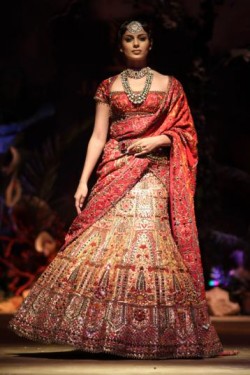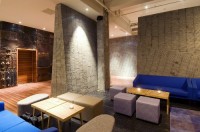The world’s largest luxury goods conglomerate, LVMH Group, will launch its private equity fund in India, in an attempt to tap the burgeoning disposable income and rising aspirations of the country’s urban population, especially women.
L Capital, present in New York, Madrid, Milan, Shanghai and Singapore, will invest in India from its fourth fund, which is dedicated to Asia and has a corpus of $650 million. It also will focus on economies such as China, Malaysia, Indonesia and Thailand.
“We are looking at investing in companies in the lifestyle arena in Asia, primarily from the aspirational segment, meaning people who are moving from mass-produced goods to the next layer up,” said Ravi Thakran, managing partner of L Capital. “We are not keen on top-end luxury in India. We may look at that, but that is not our main focus.”
Mr. Thakran said Indian high-end designers are missing out on the real growth story in fashion by focusing on couture, which caters to the richest 500 families, and the wedding apparel business. The opportunity, he said, is in the ready-to-wear segment.
Mr. Thakran–who previously worked at the Swatch Group and helped launch Indian jewellery brand Tanishq in the U.K.–also, is betting on discretionary spending gaining pace in India.
“Today the world is moving towards a new center stage, which is certainly Asia, but China and India are two pillars of that,” he said. “This was the case pre-crisis but post-crisis it is even more so.”
However, India lags behind China when it comes to scalable brands and businesses. “In China, there are already at least 10 businesses we might be interested in which are worth $200 million to $250 million, whereas in India none of the (best known) designers have even reached the $100 million scale,” Mr. Thakran said.
L Capital is looking to bring in expertise on operational improvements in areas such as product design, logistics, store design, visual merchandising, talent search and training and development. Assistance in these areas for an early stage growth company is more important than capital, Thakran said.
He will be looking for deals in shoe, apparel and wine businesses, makers of lifestyle furniture, beauty brands, apart from skincare centers and spas.
“This is where the new consumption is rising in India,” Mr. Thakran said. “When aspirations and disposable incomes rise, consequently consumption in new arenas, our targeted sectors, also rises.”
Fashion designer J.J. Valaya, in an e-mail response, defended the prevalent focus on couture and wedding dresses, citing “lack of infrastructure, distribution and adequate capital.” He added that ready-to-wear is profitable only if it achieves volume.
“At present the top names in the country are not prepared to reach those numbers single-handedly,” Mr. Valaya said. “In the West too, a Louis Vuitton or a Jimmy Choo achieved reach through strategic corporate associations.” According to Mr. Thakran, Indian fashion businesses suffer because the creative force, the designer, is forced to look after operations due to lack of resources.
This shortage of resources has prevented recognized Indian businesses from transforming themselves into brands with greater economic value, he said. “If the creative guy is busy sorting out the accounts and logistics, and looking after the retail store, he cannot focus on the creative part,” Mr. Thakran said. “If you can bring to them knowhow in these areas and to build that front end, these brands can really unleash their potential.” (Source: Online WSJ.com)






